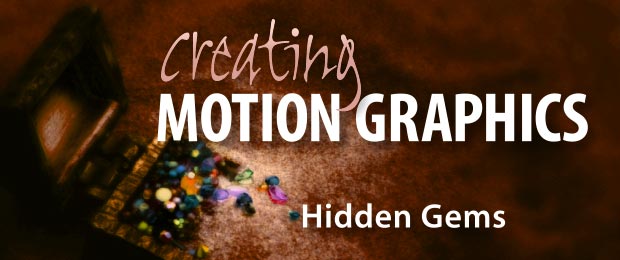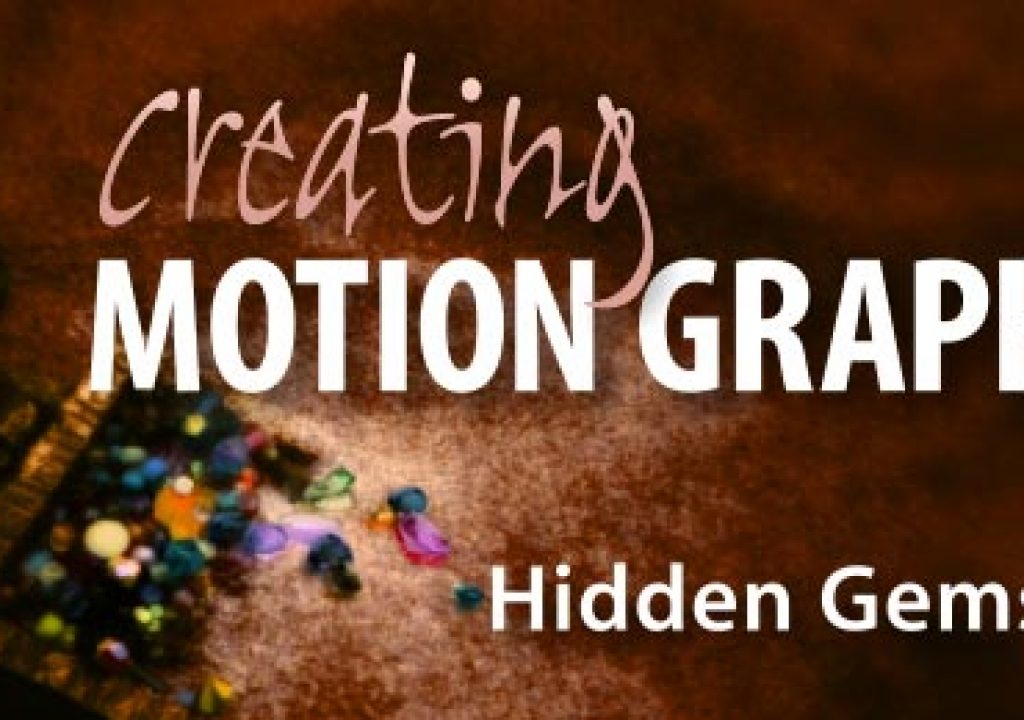
As you are probably aware by now, we’re going to go through our book Creating Motion Graphics with After Effects 5th Edition (“CMG5” for short) and pulling out a few “hidden gems” from each chapter. These will include both essential tips for new users, as well as timesaving gems that experienced users may not be aware existed.
The third chapter in CMG5 shows how to animate a layer’s transformations, as well as mastering motion paths:
After Effects CS5 has a new preference to make keyframe icons and handles easier to select when you’re editing a motion path – especially useful on monitors with more pixels. Open Preferences > General and increase the value for Path Point Size, as shown at right. Note that this also affects the size of mask points and handles.
Every tool in the Tools panel has a shortcut to select it, such as G for the Pen tool and Z for the Zoom tool. If you use these shortcuts normally, you’ll find yourself constantly returning to the Selection tool (V) to continue working. So instead of tapping the shortcut key to switch tools, press and hold down the shortcut key to temporarily switch to it. When you release the key, the previous tool (usually the Selection tool) will be automatically reselected. This takes a little practice, but is well worth mastering especially for editing motion paths where you can press G whenever you need to quickly edit handles in the Comp panel with the Pen tool (see the figure at right).
Note that this is also useful for temporarily switching to the Selection tool when you are using any other tool; press and hold down the V key to use the Selection tool temporarily, then when you release the V key you will return to the tool previously in use. (Note: An exception is when you are creating text with the Type tool: pressing V will insert a string of “vvvvvv”s in your title! When using the Type tool, press the Command key to temporarily toggle to the Selection tool to move your text block.)
Pressing the Shift key after you start dragging the current time indicator makes it “stick” as it passes over keyframes, in and out points, comp and layer markers, and so on. This helps avoid a common beginner mistake where you might navigate to keyframes by dragging the current time indicator. If you miss by a frame, then edit the layer, you’ll have two keyframes one frame apart – and a likely glitch in your animation (see figure at right).
Another way to avoid this error is to use the left and right arrows in the Keyframe Navigator (circled in red) to navigate among keyframes. The state of the Keyframe Navigator indicates whether the current time indicator is positioned exactly on a keyframe (the keyframe icon is yellow) or between keyframes (icon is gray).
To bring up a dialog to edit keyframes numerically, right-click on a value in the Timeline panel to get the Edit Value option or double-click an existing keyframe. For instance, the options dialog allows you to enter values using various criteria such as Pixels, % of Source, or % of Composition.
As an example, if you wish to set the anchor point back to the center of a layer, right-click on its value in the Timeline panel and select Edit Value. In the Anchor Point dialog, set the Units popup to % of Source, then set both the X and Y values to 50 (see figure at right).
What You See is Up to You!
When you are editing many layers and twirl down all their parameters in the Timeline panel, you’ll quickly find yourself running out of screen real estate and having to scroll up and down. To only reveal certain parameters, you can use the following shortcuts for selected layer(s):
- Property shortcut key: The most-used properties have their own shortcut key to reveal them in the Timeline. For instance, select a group of layers and press P to reveal their Position properties. Inside After Effects, select Help > Keyboard Shortcuts, then scroll down to “Showing properties and groups in the Timeline panel.”
- Über key: Pressing U for a selected layer, or layers, twirls down all properties that have their stopwatches set, while UU (two Us in quick succession) also twirls down properties that have changed from their default settings.
- Solo Selected: To reduce the number of properties revealed in the Timeline for a particular layer, select just the parameters you wish to see and press SS (two Ss in quick succession) to solo them. This is especially useful when you wish to solo parameters that don’t have their own shortcuts, such as effect parameters.
- Hide Parameters: To hide parameters in the Timeline panel, press Option+Shift on Mac (Alt+Shift on Windows) and click on their names. Again, this is very handy for hiding effect parameters that you don’t intend to edit. To reveal these hidden parameters, simply twirl up the effect and twirl it down again.
- QuickSearch: The Timeline panel’s QuickSearch dialog (added in After Effects CS4) also enables you to reveal select parameters based on their name. For example, type “wigg” to reveal only those layers with a parameter called “wiggle” or “wiggly” applied, or type “Direction” to reveal all effects with a Direction parameter. Remove the search term to return to displaying all layers again.
Trish and Chris Meyer share seventeen-plus years of real-world film and video production experience inside their now-classic book Creating Motion Graphics with After Effects. The 5th edition has been thoroughly revised to reflect the new features introduced in both After Effects CS4 and CS5. New chapters cover the revolutionary new Roto Brush feature, as well as mocha and mocha shape. The 3D section has been expanded to include working with 3D effects such as Digieffects FreeForm plus workflows including Adobe Repouss©, Vanishing Point Exchange, and 3D model import using Adobe Photoshop Extended. The print version is also accompanied by a DVD that contains project files and source materials for all the techniques demonstrated in the book, as well as over 160 pages of bonus chapters on subjects such as expressions, scripting, and effects.
We will be pulling a few “hidden gems” out of each chapter to share on ProVideoCoalition.com roughly every week.
The content contained in Creating Motion Graphics with After Effects – as well as the CMG Blogs and CMG Keyframes posts on ProVideoCoalition – are copyright Crish Design, except where otherwise attributed.

